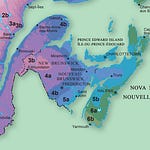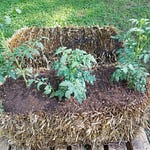I was recently speaking to a friend about her new garden, and how she was unable to have success last year growing kale, her favorite vegetable. She spent a lot of money getting it set up, and she was very disappointed with the outcome. When I asked how she had set up her gardens, she explained that she had used elevated planters (aka table gardens). The following article is my attempt to prevent anyone from ever trying this again, because table gardens are the worst.

The sell
What could be more appealing? A vegetable garden at countertop height, with no bending, squatting or kneeling. If your soil is no good, or is very rocky, or too wet - no problem - because an elevated planter is essentially a box on top of a table, so you just fill it with good soil bought from a store. Instant garden! What could go wrong?
Besides, they sell the kits in major retail stores everywhere - so they must be good right? Oh and they look so nice. Stores wouldn’t sell gardens that are practically designed to fail… would they?
The cost
Elevated gardens are not cheap. Depending on what materials are used to make them, they are about $25 per square foot or more to buy as kits. Savings can be achieved by simply using lumber, but with the price of lumber these days, even this option is costly, and of course, that lumber will eventually rot. Adding to that problem, unlike
gardens that are on the ground, elevated gardens need to be sound enough to bear the weight of all that soil, and the extra weight when it rains, and the extra weight when the snow piles up in the winter - so in general they don’t last as long as simple raised beds that sit on the ground.
Failure by design
Go anywhere on the planet where things are growing wild, without intervention from humans, and you’ll see an interesting pattern: there’s no tables with boxes full of soil in these places. Plants grow in the ground. Everything they need is in the ground. All the soil organisms that maintain and improve soil health and nutrients are in the ground. The rain water is in the ground (that’s where it all goes). The soil temperature is more stable in the ground (cooler in summer, warmer in winter). It’s less windy near the ground. There are mycorrhizal fungi in the ground that form a symbiosis with plant roots, helping plants to find the water and nutrients they need. In essence, by disconnecting your plants from the ground, you deprive them of all these resources. As a result, you have to do much more work to compensate for everything that’s missing in the design.
Limited range of perennials that work
Perennials are great because you plant them once and they grow for years - but perennials are only “perennial” if they survive the winter and come back each spring. For this to happen, the plant roots cannot go below a certain temperature (specific to each plant) for any length of time. A drawback of elevated gardens is that the soil gets much colder in winter than the soil in the ground, because it is not insulated in any way. The soil in the ground is only exposed at the top, with all the other sides being
insulated by more soil; elevated gardens, by contrast, are completely exposed in every way - so over the course of the winter they become the same temperature as the ambient air. As a result, even though you may be growing a zone 6 perennial in zone 6, your soil temperature may be as cold as soil in zone 3. The perennial has no chance.

But… I spent so much money!
There’s a term in economics called the “sunk cost fallacy”. This speaks to a tendency among people to stick with something that’s not working if they have invested considerable money, time and resources into that thing. It’s a natural thing to do, but it’s an emotional decision and it’s rarely a good move. If you spent money on something that doesn’t work, you made a bad investment. That’s it. Cut your loses and move on. The goal was, and still is, to have an awesome garden, so it’s time to make that happen. Thankfully, with the elevated garden all is not lost: just remove the legs and take out the bottom to reacquaint your planter soil with the ground - where all the action is!

But… I don’t want to do all that bending, squatting or kneeling!
For those with a bad back, knees or other mobility issues, then of course, gardening on the ground may not be an option, but for everyone else, my advice is to look past the sales gimmick and see the health benefits. Yes, it’s a bit harder to work off the ground, but it’s certainly not impossible. The squatting, kneeling, and bending over that is required to work on the ground is good exercise, and a great way to work on your flexibility and maintain range of motion. While it may be a bit difficult at the outset, with proper form and a little patience, your body will adapt over the course of the growing season.
Final thoughts
We’ve all been there. A good sales pitch is presented to us that makes the thing people have been doing for years look impossible, and the thing for sale is the solution. It’s a magic trick; a sleight of hand; and it works all the time. You buy the thing, follow the instructions, and it stinks! Then, because you spent so much money on it, you refuse to see how lousy it is and place all the blame on yourself, instead of where it belongs - on the product - because table gardens are the worst! If you are thinking about buying one, don’t do it! If you have one and don’t like your results, get that thing on the ground; plug it into mother earth and let her help.
FREE SHIPPING FROM VESEYS SEEDS
Use my NEW coupon code “GAVS25” to get free shipping from Veseys Seeds on seed catalogue orders. Free shipping is not applicable on surcharges on larger items. Promo code is valid until November 30, 2025.














Share this post